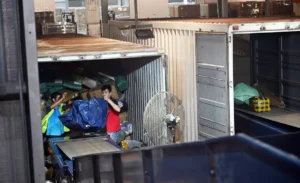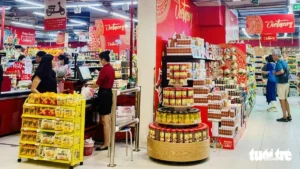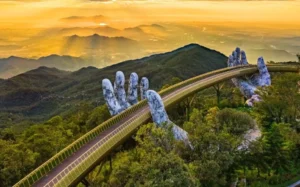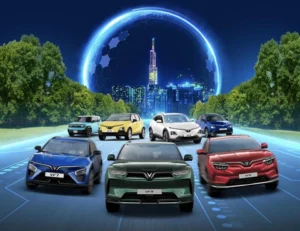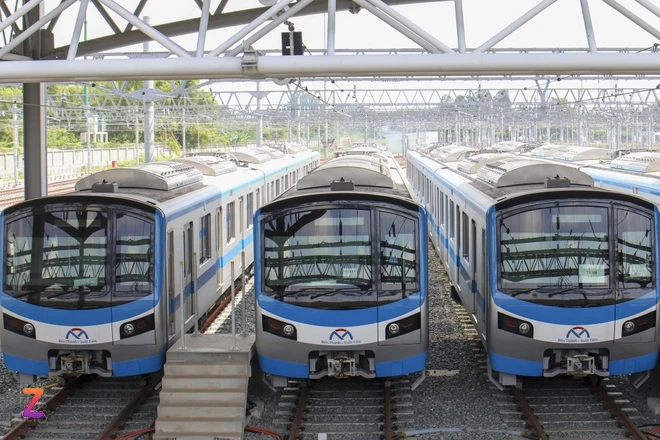With a construction value of up to 34 billion USD, the Government’s policy of using domestic services and goods when building high-speed railways is breathing new life into the Vietnamese business community, especially the construction industry.
Vietnamese railway, using Vietnamese products
According to Deputy Minister of Transport Nguyen Danh Huy, the North-South high-speed railway project is of particularly large scale, with new technology and is being implemented for the first time. In the process of developing the project to submit to the Politburo, then to the Party Central Committee, as well as the Government’s feasibility report to the National Assembly, the Ministry of Transport has proposed policies and mechanisms so that domestic enterprises can participate. The Ministry of Transport has invited experts in fields such as engineering, economics, and construction, proactively built a system of policies and mechanisms, and proposed solutions to encourage domestic enterprises. For example, the conditions that bind the general contractor to use domestically produced goods and services. This is a prerequisite for contractors when participating; or the policy submitted to the National Assembly, assigning tasks to 100% state-owned enterprises or ordering domestic enterprises to carry out items and goods that can be produced domestically.
The Ministry of Transport has also surveyed and worked with enterprises, for example metallurgical enterprises, steel production enterprises or Vietnam Railway Corporation on the premises for producing locomotives and wagons, not only for high-speed railways, but also for larger markets such as the national railway system, urban railways, etc. The leader of the Ministry of Transport affirmed: “We are confident that Vietnamese enterprises can participate and master the technology, as long as there are appropriate policies and mechanisms.”
In fact, right after the Politburo and the Party Central Committee approved the policy on high-speed railway on the North-South axis, many construction, material production, manufacturing, information technology enterprises… proactively researched and learned about human resource training projects to be ready to participate. Highly appreciating the policy of “must use” domestically produced goods in bidding packages, Mr. Tran Dinh Long, Chairman of the Board of Directors of Hoa Phat Group, said that Hoa Phat is currently the largest steel producer in Southeast Asia , in the top 50 in the world in steel production with a capacity of 8.5 million tons/year. From 2025, after the Hoa Phat Dung Quat 2 Iron and Steel Complex project is completed, Hoa Phat’s crude steel production capacity will be more than 14 million tons/year, including 8.6 million tons of hot rolled coil steel and high-quality steel.
Therefore, “King of Vietnamese Steel” confidently commits to 4 points: First, ensuring the supply of 6 million tons of steel of all kinds to serve the project, especially high-speed rail steel and high-strength prestressed steel. Second, all types of steel ensure international quality standards, in accordance with the technical requirements of the bid packages. Third, ensuring delivery time according to the project schedule. Fourth, ensuring that Hoa Phat’s price will be competitive, lower than the price of imported steel.

“We own modern steel complexes, and our workforce has confidently mastered the technology to produce many types of high-quality, difficult steel for the construction and mechanical engineering industries… Our product chain is diverse, from construction steel, high-quality rolled steel, high-strength prestressed steel, wire rod steel to hot-rolled steel (HRC), steel pipes, and galvanized steel. Not to mention, in the past 3 years, Hoa Phat has researched rail steel products. The production of high-speed railway rail steel is completely within our capabilities,” Mr. Tran Dinh Long affirmed.
With a total route length of up to 1,730 km, the North-South railway is expected to create a stable and continuous source of demand for many years, bringing breakthrough opportunities for the Vietnamese steel industry.
Take it to the next level
The representative of Deo Ca Group Joint Stock Company assessed that after a period of transformation thanks to large infrastructure projects such as the North-South Expressway and the high-speed railway, it will mark a milestone for the maturity of not only construction enterprises but also the whole country. Because the construction under the railway is not much different from road projects while digging tunnels and going through mountains, we have all done it. When Vietnamese construction contractors undertake these items, material supply enterprises will also have the opportunity to participate, as in the past North-South Expressway construction.
“From the rails up to the locomotive and carriage equipment, domestic enterprises will join forces with capable foreign enterprises to learn and gradually master the technology. We do not only plan to build a North-South high-speed railway line but also the maintenance and operation process later, even adding additional cross-section lines. Therefore, the opportunity to participate to the maximum in the project construction product chain this time will be a new step forward for enterprises in particular as well as the Vietnamese construction industry in general,” said the leader of Deo Ca.
According to Associate Professor, Dr. Tran Chung, Chairman of the Vietnam Association of Road Transport Construction Investors (VARSI), the work related to the construction of the North-South high-speed railway is divided into many groups. In which, the construction of rough infrastructure such as bridges, tunnels, roads, etc., can be completely undertaken by Vietnamese contractors. The supply of goods such as iron, steel, concrete, gravel, etc. accounts for a very large part and domestic construction material manufacturing enterprises can completely meet the demand. The most difficult part of the railway is the rail system, sleepers with complex technical requirements. In more than 1,000 km of high-speed railway track, construction material enterprises, mechanical enterprises can also make according to design orders, supply iron, steel, etc. As for the system of locomotives, carriages, and engines, Vietnam still needs to form joint ventures and learn and transfer technology from developed countries. However, domestic enterprises can completely participate in the production of cushions, foam, train seats, etc.
“Another extremely important part, which is like the heart of the train, is the information and signal system. This is an extremely complex and difficult part. We do not expect to be able to take the initiative in the core technology part that controls the signal system, but Vietnam has very strong postal and telecommunications corporations such as Viettel, FPT… which are fully capable of participating and transferring technology. Building a high-speed railway is not only about the rails and trains, but also many aspects of management, exploitation and operation. Domestic enterprises can participate in any stage,” said Mr. Tran Chung.
Agreeing, economic expert Bui Trinh assessed that this is a very good and correct policy of the Government to create momentum and great spread for many economic sectors, starting with transportation. A public investment project with a huge capital will create millions of jobs, stimulating many industries.
“This is both an opportunity, creating a new playing field, but also a pressure and motivation for Vietnamese enterprises to transform and become stronger. The policy has been opened, all conditions have been created, those who do not make efforts and do not transform will eliminate themselves. The problem is that we need a national strategy to prepare from production materials to technology, human resource training, what we can do right away, we will participate immediately, what we cannot do yet, we will learn. The most important thing is to ensure that Vietnamese products used as input for the project must ensure both quality and quantity,” said expert Bui Trinh.


